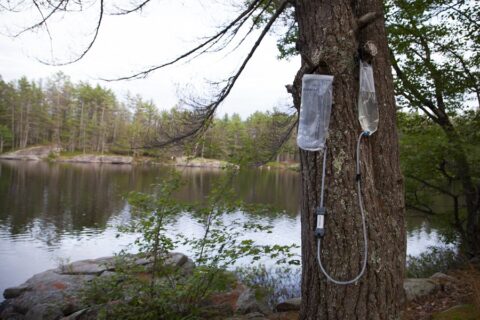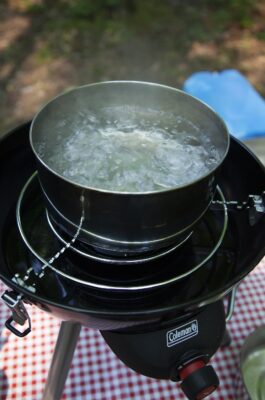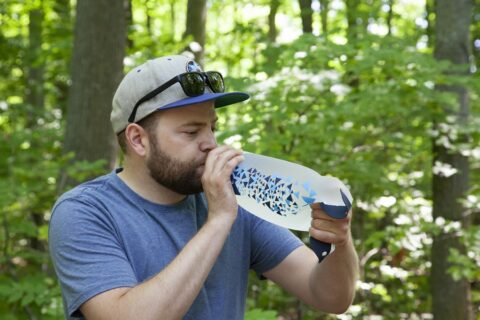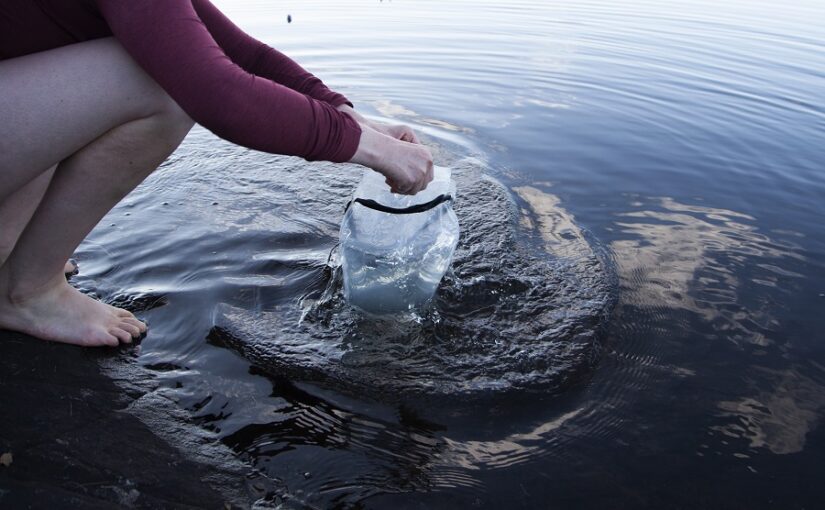Whitney Arnott is a hiking and canoeing enthusiast that likes to spend days at a time in the backcountry when she’s not working at Ontario Parks branch office.
Here are her tips for safe drinking water when you’re in the wilderness.
When it comes to drinking water in the backcountry, you may think it will be simple. There’s lots of water all around you, right?
While that is true, it’s not as simple as turning on a tap at home or dipping your bottle below the water’s surface to fill it.
Untreated water found in lakes, rivers, ponds, etc. isn’t safe to drink. It can contain waterborne parasites and diseases like Giardiasis (also known as beaver fever) or E. coli, which can make you sick.

To reduce your risk, follow these steps for clean, drinkable water:
The ground rules
It’s important to treat ALL water you drink in the backcountry, even if it “looks” clean or you see wildlife drinking from it.
Always source untreated water from moving water. Still or stagnant water sources are more likely to contain harmful microorganisms along with algae and mud, which make cleaning it harder.
When you collect untreated water, make sure you use a different vessel than the one you drink from. You don’t want untreated water contaminating your drinking spout (i.e., the lip of your water bottle).
Remember to properly treat any water used for drinking, preparing food or infant formula, brushing your teeth, or washing dishes.
Don’t forgo water because treatment creates an extra step. Long, hot days and prolonged exercise mean your body will need more hydration.

Choose your filtration method
Boil | Tablets & Drops | Filters | UV Light
Depending on your trip length and personal preference, your water filtration method may vary. As with all options, follow the manufacturer’s instructions for proper use.
Whitney’s pro tip: I take at least two water filtration methods with me on my trips so I don’t get stuck without clean water. Carefully choosing my filtration methods also works in my favour because some of them work better when combined.
Rolling boil
 Most experts recommend boiling water as the first option as it is the only method guaranteed to remove ALL pathogens when done correctly.
Most experts recommend boiling water as the first option as it is the only method guaranteed to remove ALL pathogens when done correctly.
Just keep in mind, even if you cook food in boiling water, it will still need to be boiled beforehand, which adds to your cooking time.
Whitney’s pro tip: I boil my water for five minutes. The time can vary depending on variables like fuel and altitude, so I always make sure it’s at a rolling boil for at least five minutes before I cook with it or let it cool to drink.
Chlorine tablets and iodine drops (disinfection)
When fuel is on reserve or when you need water on the go, tablets and iodine drops are an ideal alternative.
Follow the manufacturer instructions for the amount you should use compared to how much water you’re treating, then wait the noted period before consuming.
Whichever method you choose, make sure they are sealed properly and stored in a waterproof bag, so they remain intact for use.
Important: water that has been disinfected with iodine is NOT recommended for pregnant women, people with thyroid problems, those with known hypersensitivity to iodine, or continuous use for more than a few weeks at a time.
Whitney’s pro tip: I take these options with me so I can refill my water bottle or hydration pack throughout the day without having to pull extra gear out of my backpack.

Filters
There are a few different filter systems available such as:
- straws that you stick directly in the water and drink through
- bags that can filter a couple of litres at a time using gravity
- pumps that you push the water through using your own force
No matter which you choose, aim to collect water that’s as close to clean as possible since leaves, algae, mud, etc., can clog the filter.
Different filters treat different pathogens, so it’s important to talk to your local outdoor retailer to get advice that’s specific to your use and needs. An “absolute” filter (NSF 53 or 58) with “cyst removal” on the label should be chosen for the most effective reduction in cysts.
Plan accordingly because some filter bags allow you to filter a decent amount of water, but they can take time to work. They also require special storage methods that don’t compromise the filter; follow manufacturer instructions for storage and maintenance.
Disinfection and filtration on their own may not remove all pathogens, however used in combination will provide more effective pathogen removal.
Whitney’s pro tip: This is a great option when I want to conserve fuel (for multi-day trips), but have time to filter water once I get set up at camp. Between tablets and a gravity filter, I can usually meet all my water needs and still have a backup option if one fails.
UV lights
UV lights are a lightweight solution that works quickly and are a great option for on-the-go. Some require batteries, so carrying extra is essential.
As these units can only work on water with low turbidity, its important to always pre-filter the water before using the light.

Clean water is the priority
There is a whole slew of water purifying methods that can provide you with clean, potable water in the backcountry.
The most important thing is that you have one that works for you and your type of trip, and that you always carry a backup method.
